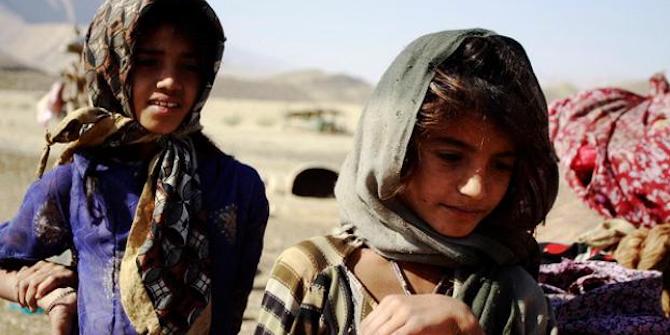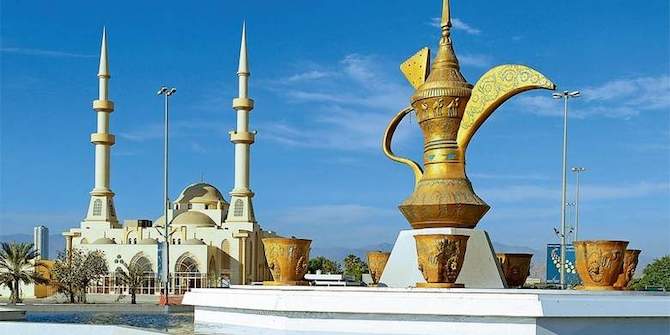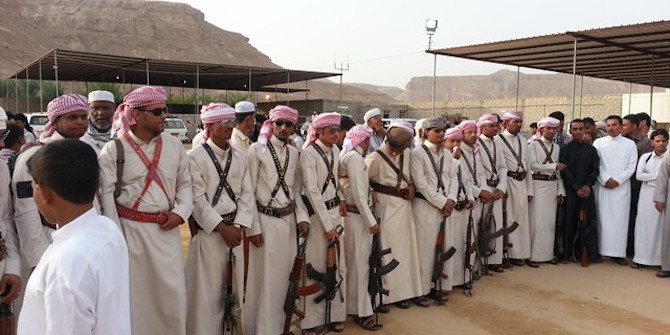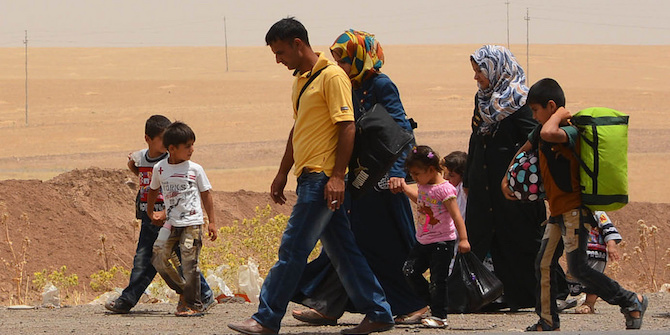by Richard Tapper
This memo was presented part of a workshop organised by the LSE Middle East Centre on 13 June 2018, looking at Tribe and State in the Middle East.

Anyone who follows Middle Eastern politics today is aware that tribes and tribalism still play an important role in many countries. Half a century ago, few anticipated this. But are today’s tribes the same kind of groups as they were then? Have not the tribes too been changed by the revolutionary changes in military and communications technologies and in the nature of world economics, politics and society since the mid-20th century? We need to take account not merely of these changes, but of how the term tribe has always been applied to very different kinds of social groups, living in very different kinds of states.
Tribalism has a bad press. Commonly presented as a dark, destructive, primeval force – the antithesis of rational modernity – tribalism is anathema to those who defend civilisation – supposedly law-bound, egalitarian, human rights-based. This perspective ignores both the awful barbarities committed by purported civilisations, and the existence of recognised tribal features within so-called civilised societies: football clubs, some political parties, some businesses, some closed institutions, organised crime. Nepotism and other forms of corruption are tribal in that they avoid the rule of law and the institutions of the state by favouring personal ties of kinship and patronage. No country today is free of such activity – it appears to be ‘human nature’ to seek a way around rules imposed by state perceived to be unresponsive, impersonal, undemocratic.
There are other perspectives. In 1983 I concluded the Introduction to a volume of papers from a 1979 conference on ‘Tribe and State’ as follows: ‘Tribalism has its faults and limitations, but its provision of social security and its long-term survival value should recommend it as no anachronism in the last decades of the twentieth century.’ Events in the Middle East in the decades since have perhaps confirmed the validity of this assertion – as I noted recently in an ‘Update’ to that Introduction, where references will be found to support much of what follows.
Since 9-11, tribalism has rarely been absent from press commentary, not only on Afghanistan and Iraq following the US-led invasions but also on other Middle Eastern states, where tribes play a greater or lesser political role.
But what do we mean by tribes? Tribes defy definition. Outsiders’ images of tribes depend on where they have been and what they have seen (live or on media) and such images may not coincide at all with the views of the tribespeople themselves, or their non-tribal fellow-citizens.
In some countries, state officials and non-tribal people equate tribes with nomads and pastoralists; but there is no necessary congruence between these elements, or any two of them. Certainly, some tribes are (or were) pastoral nomads; but many are not; many pastoralists are not nomadic; and there are both pastoralists and nomads who do not belong to tribes; and so on.
Some tribes are large chiefdoms, stratified by class, and capable of confronting if not removing governments. Others are egalitarian and leaderless; small tribes may deliberately avoid providing identifiable leaders, in order to avoid attracting attention and intervention by more powerful forces such as the state or larger tribes.
Studies of tribal societies in Iran and elsewhere have shown that it is useful to distinguish the local level of organisation, which is an adaptation to economic or ecological circumstances (esp. in the case of pastoral nomads); and the tribal level, where leaders emerge (or are elected or nominated) to deal with outsiders, whether agents of the state, competing tribal neighbours, or wealthy settled landowners.
For many analysts, the essence of tribe is genealogy (lineage, common descent). This is a common tribal ideology or organising principle, but in practice, and historically, many tribal groups have formed on a political rather than a genealogical basis, following a charismatic or successful leader, either in conquest or in defence of territory.
In most tribal societies, tribalism (in the sense of giving priority to kinship loyalties and common action with fellow-tribesmen) is not the only organising principle. Communities also form at specific levels, claiming prior loyalties in disputes, and often leading to factionalism and feuds. Often both ethnic and class identities and differences are important in structuring tribal society, along with modes of patronage that bridge them. Above all, religious beliefs and loyalties provide what Salzman called a ‘social structure in reserve’, available for mobilisation, especially when appealed to by religious leaders.
This complexity affords tribes the flexibility that historically enabled them to adapt to changing circumstances. Some recent writers on tribal societies, for example on Afghanistan under and after the Taliban, consider that tribal society has broken down: chiefs have been eliminated, new bases of loyalty and group formation have replaced traditional forms. This is a misconception based on a rather narrow understanding of ‘traditional’ tribal organisation; in my view, the tribes of Afghanistan today have displayed the flexibility they have exercised in previous crisis situations.
Groups categorised as tribes vary widely both across the region and within individual countries, in size, resource-base, modes of recruitment and organisation. They live in villages, nomad camps, towns and cities, and in mountains, deserts and fertile valleys. Rather than define them, I have found it more productive to treat ‘tribe’ and ‘tribalism’ as ideas, usually in relation to other ideas to which they stand in opposition, notably ‘state’, and ‘rule of law’. They are best seen as ideological elements determining political and social behaviour. Other such elements include political and economic expediency (what leaders have to offer) as well as religious inspiration (persuasive charismatic leaders), both of them informed or even ignited by external forces such as foreign invasions. One should also consider the dynamics of tribe–state relations over time and the motors of change among the tribes: the technologies of warfare, of transport and communication, of production, of citizenship.
Richard Tapper is Emeritus Professor of Anthropology at SOAS, University of London, and taught there between 1967–2004. His publications have focused on pastoral nomadism, relations between ethnic and tribal minorities and the state, and the anthropological study of Islam, among other topics.
Other posts in this Series:
- Introduction by Courtney Freer
- Tribe and State in the Contemporary Arabian Peninsula by J. E. Peterson
- The Syrian Civil War: What Role do Tribal Loyalties Play? by Haian Dukhan
- Tribes and Tribalism in a Neoliberal Jordan by Jessica Watkins
- From Revolutions to Elections: When Tribes Transform State Power by Alice Wilson
- The Political Decline and Social Rise of Tribal Identity in the GCC by Steffen Hertog
- On Tribalism and Arabia by Andrew Gardner
- Tribal Modern: Branding New Nations in the Gulf by miriam cooke
- Gulf Nationalism and Invented Traditions by Natalie Koch
- Tribal Social Evolution and Gender: Conflict in Urbanized Tribal Units by Alanoud Alsharekh
- Tribal Revival in the Gulf: A Trojan Horse or a Threat to National Identities? by Maryam Al-Kuwari







This is really very intresting to see this. like to get this types of blog in future
It’s really very interesting and effective blog that you have written so clearly everything and I hope that you keep writing this type of content in the future also. Hoping to get more such helpful articles.